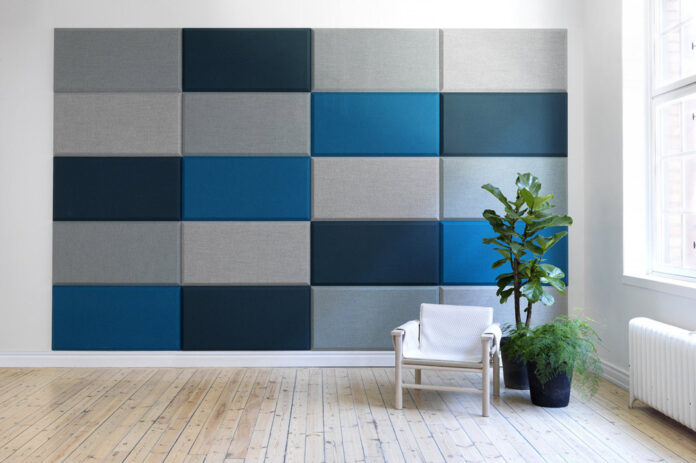Urban sprawl has brought with it a cacophony of sounds—traffic roars, planes overhead, trains whistles, and even the hum of industry. For many, the charm of the city is in this hum of activity. However, for those living in the shadow of these sounds, it can feel like an inescapable, intrusive force that infiltrates our homes’ sanctity.
The problem of noise pollution in residential areas
Noise pollution is an often-overlooked environmental hazard that is on the rise, particularly in urban areas. The World Health Organization (WHO) has labelled it a “modern plague” affecting physical and psychological well-being.
Residential neighbourhoods near traffic or industrial sources are especially vulnerable. The constant exposure to high noise levels can lead to chronic stress, sleep disturbances, and even heart disease. It’s an issue that demands a peaceful, preventive solution – the sound barrier wall.
Benefits of Sound Barrier Walls
● Reduced Noise Levels
The most obvious benefit of sound wall soundproofing is its ability to reduce the volume of ambient noise significantly. By erecting a barrier between the noise source and the residential area, sound waves are absorbed or reflected, preventing direct transmission and thereby diminishing the intensity of the noise.
Studies have shown that a well-designed noise barrier can cut noise levels by as much as 10 to 15 decibels, offering a substantial respite from the urban symphony of clamour.
● Improved Quality of Life
A quieter environment naturally leads to a higher quality of life. Residents can now enjoy their homes, have conversations without shouting, and experience a significant reduction in stress levels. Children can study in peace, uninterrupted by the hustle and bustle outside. This improvement in overall well-being cannot be overstated; people are happier, more productive, and feel more connected to their community in a peaceful setting.
● Enhanced Privacy
Sound barrier walls not only block out unwanted noise but also enhance residents’ privacy. High solid barriers prevent outsiders from peering in and also restrict line-of-sight, creating a personal space within the home that is not easily invaded by external noise or visual disturbances.
● Increased Property Value
A home that is situated in or near a noisy environment typically faces a reduction in its market value. Installing a sound barrier wall can reverse this trend and increase a property’s value. Potential buyers are willing to pay a premium for a peaceful abode, and a well-designed sound barrier can contribute to a higher resale value.
● Better Sleep and Residential neighbourhoods near traffic or industrial sources are especially vulnerable.
Perhaps the most compelling benefit of a sound barrier wall is its ability to promote better sleep and, by extension, improved health. Quality sleep is crucial for physical and mental restoration, and sound barriers facilitate an environment conducive to rest, free from disturbances that can disrupt a much-needed sleep cycle or lead to conditions like insomnia.
Types of Sound Barrier Walls
● Concrete Walls
Concrete barriers are the most commonly used form of sound barrier walls due to their effectiveness and durability. They are typically large, solid structures that provide a near-complete block to sound and visual intrusion. However, they do come with a price—concrete walls are often criticised for their stark, unattractive appearance.
● Timber Walls
For a more natural aesthetic, timber noise barrier walls can be appealing. They offer a warmer appearance and can be designed to blend with the environment. While not as soundproof as concrete, timber walls still offer substantial noise reduction and are a preferred choice when aesthetics are a top consideration.
● Living Walls
Living or green walls are an eco-friendly solution to noise pollution. Consisting of living plants, they absorb sound waves and can reduce noise levels significantly. Living walls also contribute to the local ecology, provide oxygen, and improve air quality. The only downside is their high maintenance requirement and difficulty in controlling their visual outcome.
● Acoustic Fences
Acoustic fences, or noise barriers designed to be installed on top of an existing wall or structure, provide great flexibility and effectiveness in dampening sound. They come in various materials, from transparent polycarbonate to artificial turf fitted with wall soundproofing technology, ensuring that acoustic fences can be customised to meet the needs and aesthetics of any residential area.
Considerations for Installing Sound Barrier Walls
● Location and Placement
The correct placement of a sound barrier wall is crucial to its effectiveness. It should be positioned between the noise source and the residential area, with as much distance and as little obstruction as possible. Natural elements such as hills and vegetation can also work in conjunction with the wall to enhance its efficacy.
● Design and Aesthetics
While the primary function of a sound barrier wall is to reduce noise, it is equally important that it complements the neighbourhood aesthetically. The design should be considered carefully to ensure that it adds to the visual appeal rather than detracts from it.
● Maintenance and Durability
The barrier’s longevity and maintenance level are essential to its cost-effectiveness. Regular maintenance checks and any necessary repairs should be part of a scheduled routine to ensure it continues to serve its purpose effectively over time.
● Cost and Return on Investment
Noise barrier walls can represent a significant investment, but it’s important to consider the long-term returns, including increased property value and the intangible benefits of a quieter home. It’s a decision that should be weighed against the quality of life for current and future residents.
Conclusion
In the quest for a quieter, more serene residential environment, sound barrier walls offer a tangible solution that addresses the modern challenges of noise pollution. From reducing stress to increasing property values, the benefits are clear. Whether it’s for peaceful nights, calm mornings, or simply the delight of a revitalised residential area, these walls offer more than just sound insulation—they promote harmony and well-being in the home.









